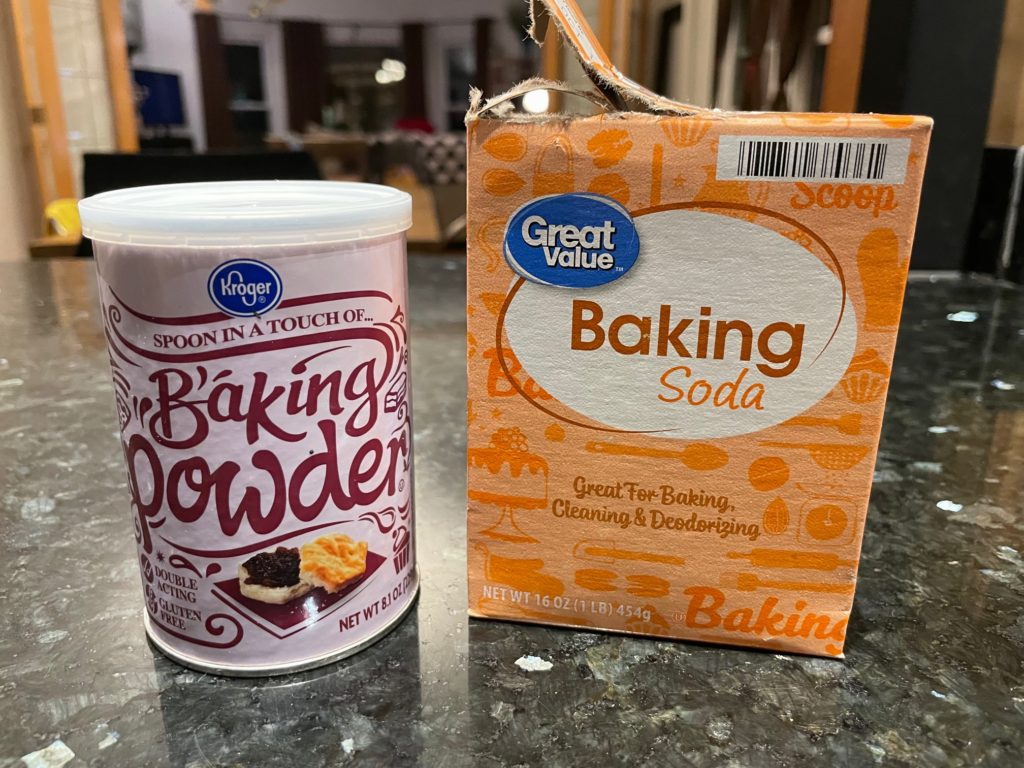
I’ve always loved making banana bread. It’s sweet, delicious, and almost too simple to make. But with its simplicity comes a variety of choices. Oil or butter. One banana or two. Brown sugar or white sugar. If you’re like me, you might also be asking yourself the following question: should you use baking soda or baking powder in banana bread?
As a general rule, you can use either baking soda OR baking powder in banana bread – both ingredients will make your banana bread rise. While baking soda will react with acidic ingredients in the batter to raise your bread, baking powder can leaven banana bread without the addition of acidic ingredients.
Let’s take a look at how these two chemical leavening agents make bread rise in the first place. Then, I’ll show you how you can substitute one ingredient for the other in your banana bread recipe if you only have one type of leavening agent on hand.
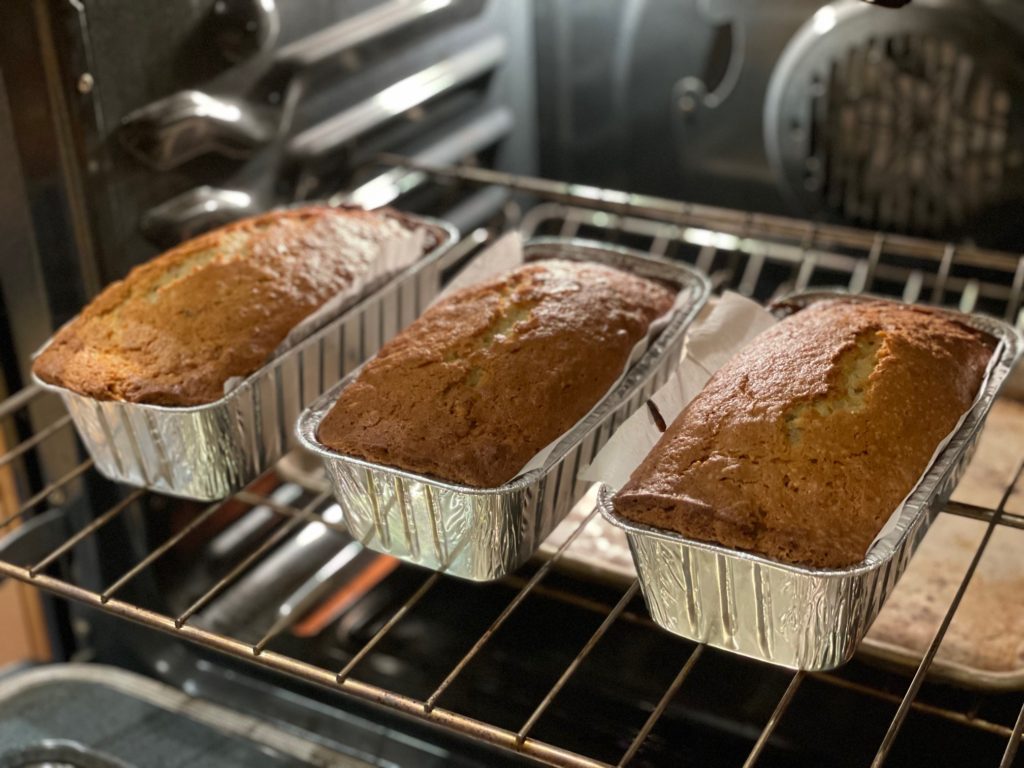
What Is The Traditional Leavening Agent in Banana Bread?
As a quick bread, banana bread gained popularity in the early 1900s with the widespread availability of baking soda and baking powder in North America. Although baking soda (sodium bicarbonate) is commonly used in today’s banana bread recipes, the earliest versions of modern banana bread often used baking powder.
Let’s take a look at a couple of the earliest banana bread/muffin recipes.
Mrs. Dean’s Banana Muffins – 1918
In 1918, “Mrs. Dean” submitted a banana muffin recipe to The Garden Island paper that closely resembles modern versions of banana bread. As you can see in the ingredient list below, her recipe called for baking powder.
1 cup corn meal
3 1/2 tsp of baking powder
2 tablespoons of sugar
1 sifted banana
3/4 cup rye flour
1 tsp salt
3/4 cup milk
1 egg
1 tablespoon Crisco
Source: The South Florida Reporter
Banana Muffins, From the Tropics to Your Table – 1926
When the Fruit Dispatch Company published From the Tropics to Your Table in 1926, a cookbook featuring 83 different banana-centric recipes, their famous banana muffin recipe also used baking powder. See below. (source).
2 tablespoons butter
1/2 cup brown sugar
1 egg
2 bananas
1 1/4 tsp baking powder
2 cups flour
1/4 tsp salt
1/2 cup milk
Source: From the Tropics to Your Table
From looking at some of the oldest recipes, it seems that baking powder, rather than baking soda, is the most traditional ingredient used in banana bread. However, when you understand how both leavening agents function, you’ll understand why you can use one or the other. They’ll both work.
How Baking Soda Works in Banana Bread

Baking soda (sodium bicarbonate) was one of the first available chemical leavening agents, hitting grocery store shelves around 1846 (source). This ingredient made it possible to have light and fluffy baked products that didn’t require a lengthy rising process (as was the case with yeasted breads). You only needed to add baking soda and some kind of acidic ingredient (like buttermilk or vinegar) to a quick bread batter, and it would rise in the oven.
Here’s how it works. When an acidic ingredient comes into contact with baking soda, the mixture begins to form carbon dioxide bubbles. This is why middle school science classrooms often mix baking soda with vinegar to create a sort of volcanic eruption.
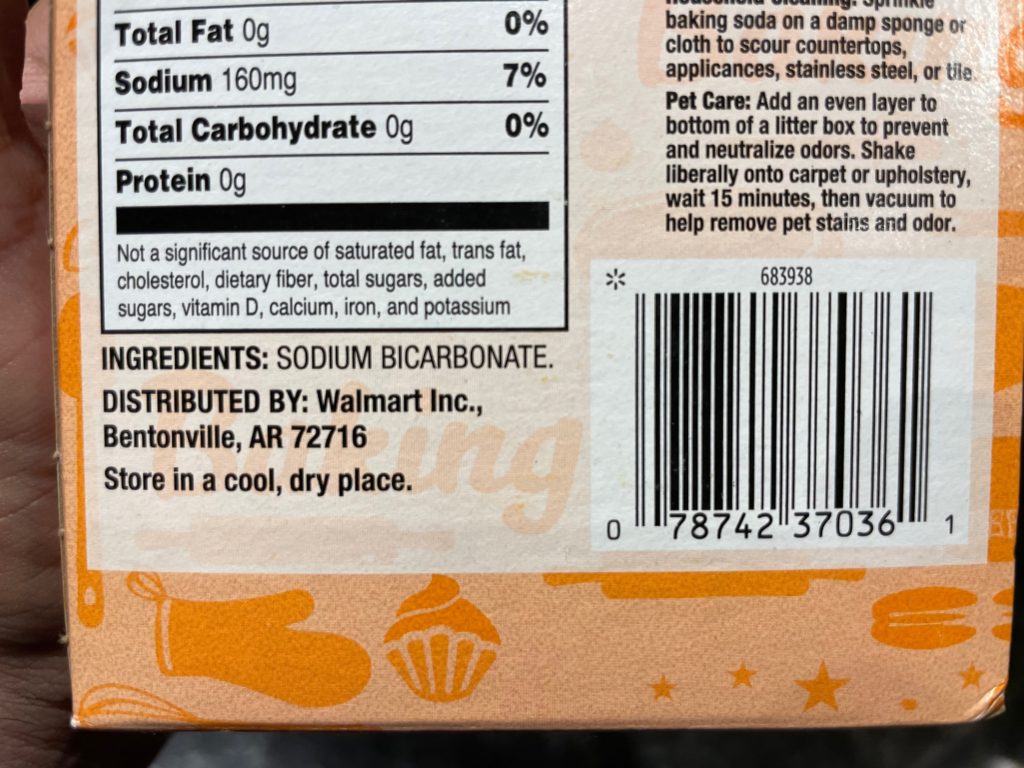
So, in a banana bread recipe, baking soda needs at least one acidic ingredient to react with. Most recipes call for buttermilk (a type of sour milk), but this addition might not be necessary. It turns out that mashed bananas are actually acidic enough on their own to react appropriately with the baking soda and make enough carbon dioxide bubbles to raise the dough.
Just using baking soda as your leavening agent will work perfectly fine in banana bread in most cases. However, if you don’t have any acidic ingredients on hand, like buttermilk, and you’re only using a small amount of mashed bananas, you might need to use baking powder. Here’s why…
How Baking Powder Works in Banana Bread
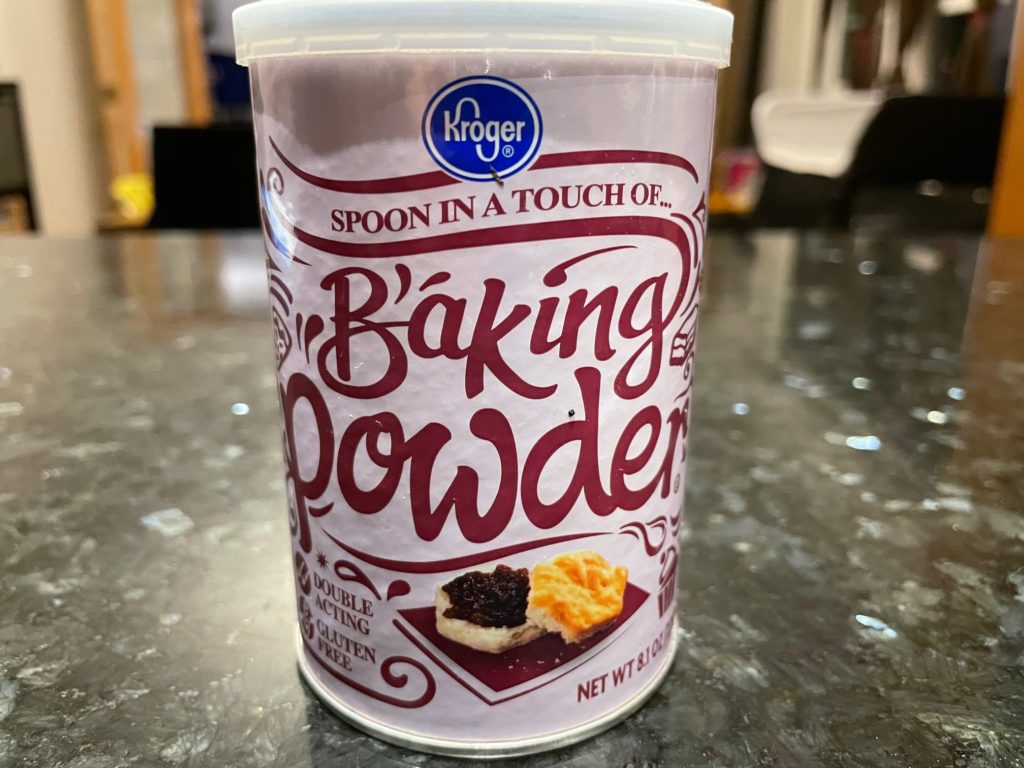
Baking powder hit the market around 1856 and it had one big advantage of baking soda – it didn’t require an acidic ingredient in order to rise (source). Inside a can of baking powder are three key ingredients: baking soda (sodium bicarbonate), an acidic powder, and corn starch. Yes, baking powder has baking soda in it.
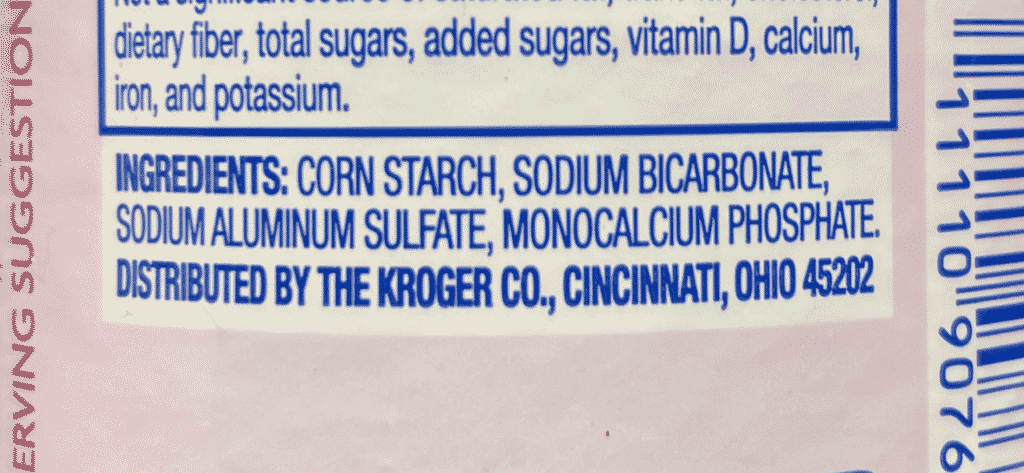
Since baking powder already has baking soda in it, plus it contains an additional acidic ingredient, it has everything needed to set off a chemical reaction. So you don’t need to rely on the baking powder reacting with buttermilk or bananas to make your bread rise, it will rise no matter what the ingredients of your banana bread are.
Another benefit of baking powder is that it is double-acting. When baking powder mixes with water, a first chemical reaction takes place, and carbon dioxide bubbles are formed. Then later, when your bread hits the high heat of the oven, a second reaction takes place and more bubbles are formed. This is why baking powders are labeled as “double-acting” – they make batters rise twice. The main benefit of this is that you can let your batter rest a little bit before putting it in the oven. You don’t have to worry about the bubbles disappearing if you wait too long to bake it after mixing.
So, if you’re using baking powder to make your banana bread, it’s not necessary to use an acidic ingredient like buttermilk. You can use regular milk and you’ll do just fine. You can also let the batter rest a little bit before baking.
How to Substitute Baking Powder for Baking Soda in Banana Bread
What happens if your banana bread recipe calls for baking soda but you only have baking powder?
To substitute baking powder for baking soda in banana bread, use triple the amount of baking powder that you would of baking soda. For example, if your recipe says to use a 1/2 teaspoon of baking soda, you can use 1 1/2 teaspoons of baking powder instead. You won’t have to change any of the other ingredients.
How to Substitute Baking Soda for Baking Powder in Banana Bread
What happens if your banana bread recipe asks for baking powder but you only have baking soda? This can be a little bit trickier, but you definitely can make banana bread with just baking soda.
To substitute baking soda for baking powder in banana bread, use one third the amount of baking soda that you would of baking powder. For example, if your recipe calls for 1 tablespoon of baking powder, you can use 1 teaspoon of baking soda (exactly one third). As long as you are using mashed bananas in your recipe, the baking soda will react just fine with the acidity in the bananas.
An Easy Banana Bread Recipe (with Baking Soda or Baking Powder)
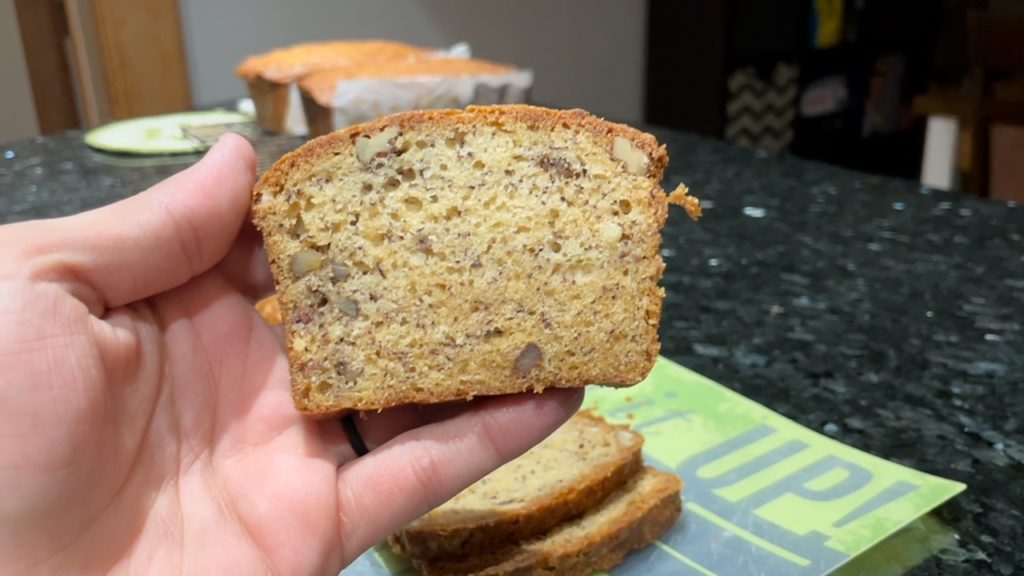
If you’re looking for a standard banana bread recipe that’s super easy to make using either baking soda or baking powder, this is the one for you. It follows the 1-2-3 method: one part oil, two parts sugar, and three parts flour, so it’s actually pretty easy to memorize.
Ingredients
- 1/2 cup vegetable oil
- 1 cup sugar
- 1 egg
- 1 tsp vanilla
- 2 bananas mashed
- 1/2 cup buttermilk (or regular milk)
- 1 1/2 cups all-purpose flour
- 1 tsp salt
- 1/4 tsp baking soda (or 3/4 tsp baking powder)
- 1/2 cup chopped walnuts (optional)
Instructions
Mix together the oil, sugar, egg, vanilla, mashed bananas, and buttermilk until everything is thoroughly combined. Then add all of the remaining ingredients and stir just until there are no dry bits of flour left. Avoid over-mixing. Then, fold in the walnuts if you choose to add them. Pour the batter into a greased bread pan, or a pan lined with parchment paper. Here’s my favorite bread pan. Bake banana bread in a preheated oven at 350°F (180°C) for one hour.
Conclusion
It turns out, you can easily make banana bread with either baking soda or baking powder. The choice is yours! You can also check out this little experiment I did to find the best banana bread batter consistency. Here’s a little preview of the results: a wet batter is better! Check out the article here.
